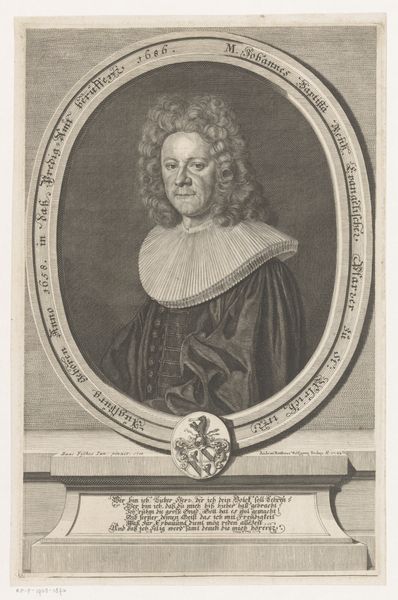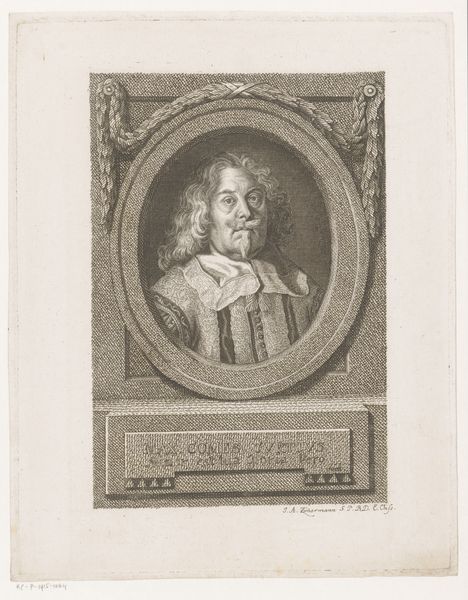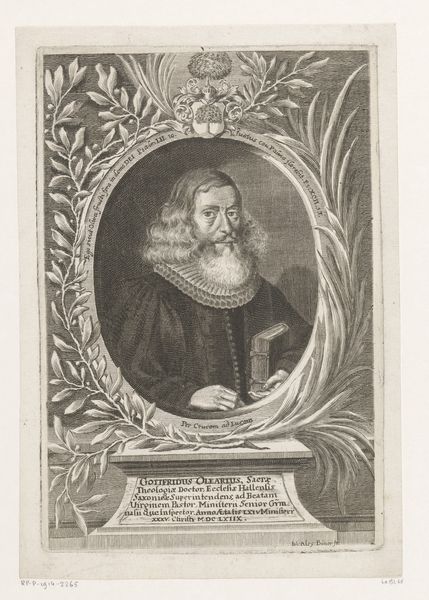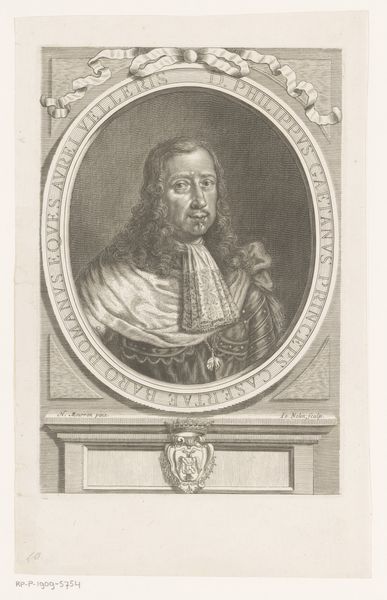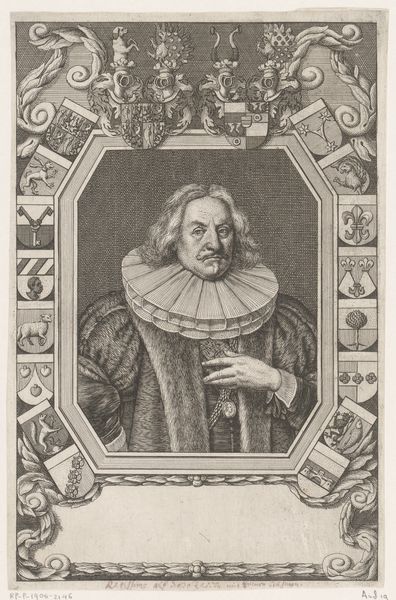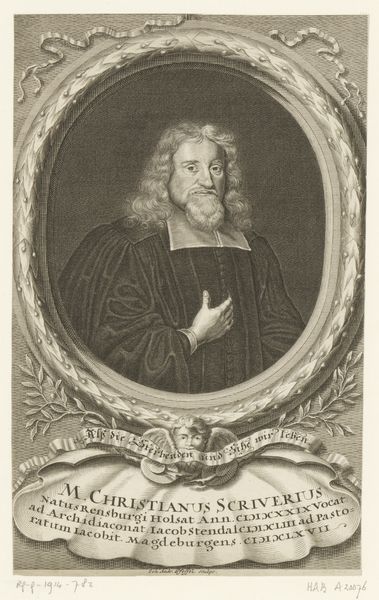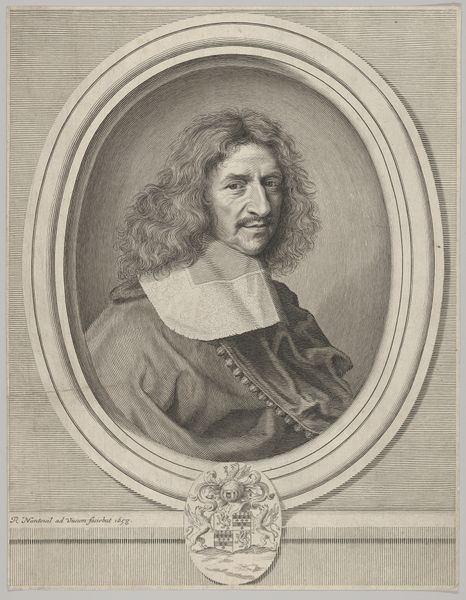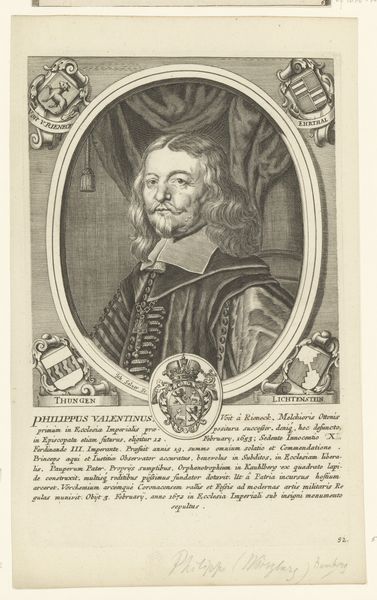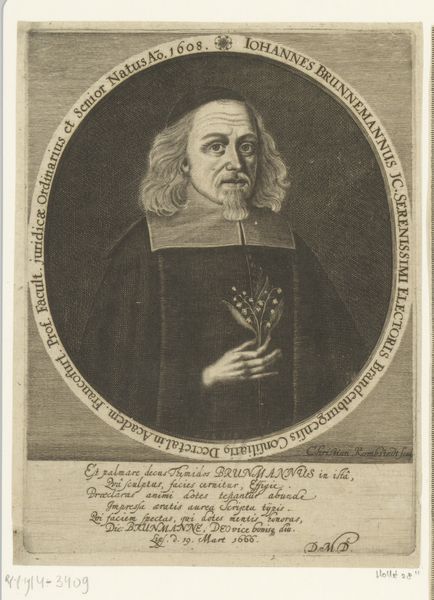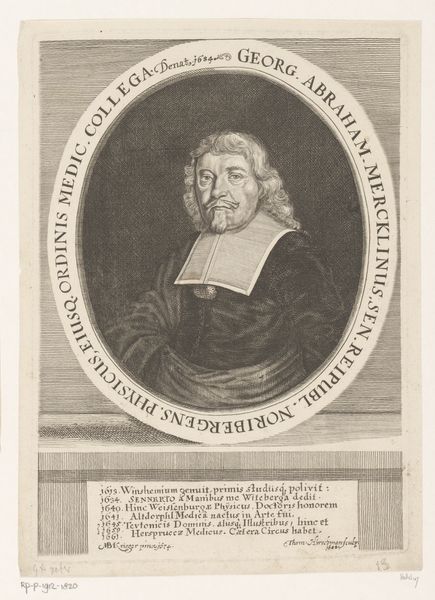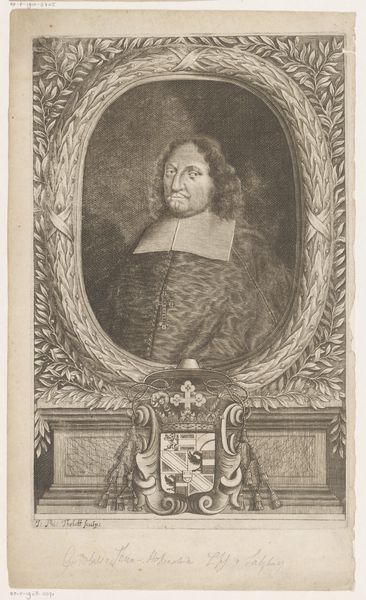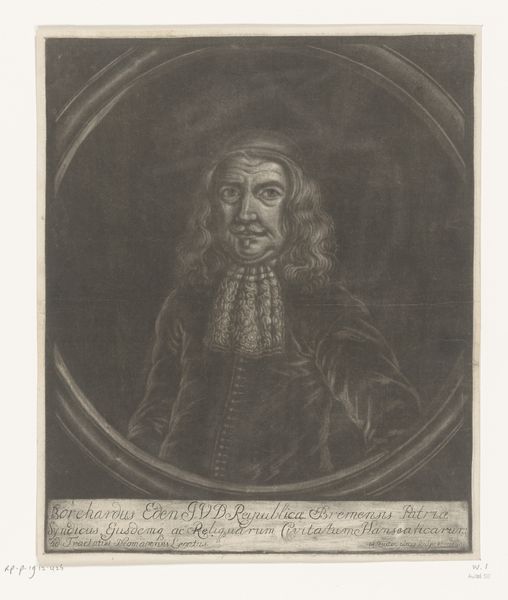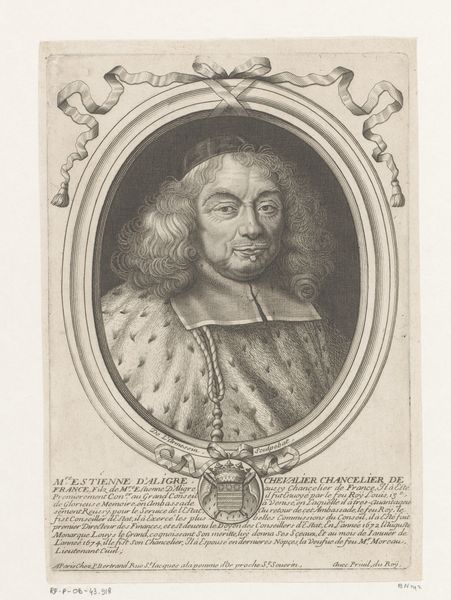
engraving
#
portrait
#
toned paper
#
baroque
#
figuration
#
history-painting
#
engraving
Dimensions: height 242 mm, width 180 mm
Copyright: Rijks Museum: Open Domain
Nicolaus Häublin etched this portrait of Paulus Topler in 1663, a member of the patrician class in Nuremberg. Observe the family crest, a heraldic emblem rich with symbolic meaning, prominently displayed beneath the portrait. Crests such as this signified lineage, status, and identity within a rigid social structure. We find similar emblems across Europe, adorning castles, tapestries, and manuscripts—each a visual declaration of power and heritage. Consider the lion rampant, a motif frequently seen in medieval heraldry; its aggressive stance was meant to embody courage and strength. Yet, across cultures, similar animal symbols take on different meanings. The lion in ancient Mesopotamian art, for example, symbolizes royal authority and divine protection. This human need to codify identity and status through symbols is cyclical, resurfacing in modern-day logos, flags, and even fashion. As such, emblems continue to be powerful anchors, engaging viewers on a subconscious level, evoking a sense of belonging, and prompting deep emotional responses tied to our collective memory.
Comments
No comments
Be the first to comment and join the conversation on the ultimate creative platform.

